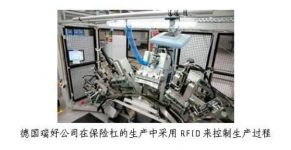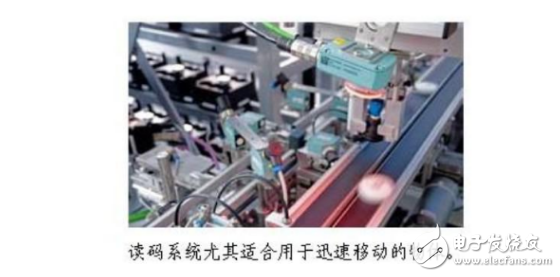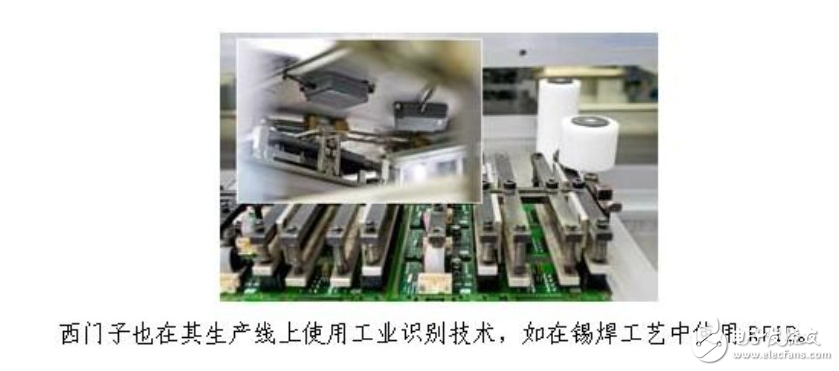
Application of RFID and QR code in industrial production
[ad_1]
The globalization of the production chain, the increasingly open market, the gradual adaptation of the law to the commercial system, and the high degree of comparability of products due to the widespread promotion of the Internet have made users increasingly demanding and more products. For expensive technical products, customers are less and less satisfied with a ready-made product, so businesses always want to personalize the product to the end and provide different consumers with different versions of the same product. The increasing complexity of products and the relationship between supply and demand requires companies to seamlessly trace all components and raw materials in order to continuously improve the process and to respond immediately when quality problems occur. By arranging serial numbers, all products can have their own logos. In other words, mass-produced products have become unique commodities through data identification technology.

1 Industrial automatic identification technology
One way to deal with these challenges is to use information technology. However, some information is still unavailable or only limited in use. Therefore, sometimes only under special circumstances, the serial number of the device or component delivered to the customer will be automatically displayed to the customer. And this information is essential to use customer feedback to improve the process in a timely manner. On the other hand, in some fields, data is still collected manually, which is expensive and error-prone. Therefore, a technology that can automatically identify all industrial products is needed. The technology that used to dominate was the bar code. And now there are more effective alternatives: QR codes and RFID. In addition, optical character recognition technology (Optical Character Recognition, OCR) has grown into a recognition technology suitable for industrial products. In this way, production and logistics experts can choose different identification methods for different applications.
2 Special advantages of automatic identification technology

The QR code can be printed on the label at a very low cost. Secondly, they can also be engraved or nailed on the products by laser or rivets on castings that cannot be labeled. These codes will be captured by the CCD camera, decoded and then transmitted to the IT or automation system. The technology is now very mature, and can be reliably distinguished even under oblique angles or dim light conditions. In addition, the code can be read even when the product is moving at a high speed. This function is mainly used for products that are packaged in equipment or the tobacco industry.
RFID technology is mainly used when the detection device and the identification system cannot be effectively connected, when a large amount of data or a large range of data needs to be processed, and when the saved information needs to be changed.
Learning character recognition technology is mainly used when information needs to be displayed for people to refer to, such as the production date or shelf life of a product.
3 High transparency, can optimize the process
Performing identity authentication on each component without landing can make the business process more transparent at a lower cost. The collected data can be used for various tasks, from the control of a single process to comprehensive data mining. So in the production process, you can switch to the production of individual parts at will according to the contract requirements-through the RFID chip or two-dimensional code in the product, the machine and equipment only need to look up in the database? Know? How to do it. In addition, the automatic control of material flow can also be realized. The advantage for the enterprise is: In this way, the enterprise can produce different products that meet various needs. The materials and labor costs consumed are similar to those of mass production, but the production scope has been expanded a lot. If all parts and semi-finished products are identified by two-dimensional codes, and these identifications are read at each processing step, then a complete document record has been established for each part. These data form the basis for the manufacturer to monitor the quality (for example, on which machine a certain part is produced), and can be used for external quality management, such as when the product needs to be recalled.
4 Improve internal processes

The data from production to logistics also brings a dawn to the supply process (supply chain management). Among them, data exchange between product forwarders and users is also very necessary. With this, the shipper can provide the product’s whereabouts at any time, and calculate when the customer can get the goods. This point is particularly important for the realization of just-in-time production strategies and just-in-time sequential supply, because the implementation of these strategies requires timely information about any changes in products and processes in order to control production. Therefore, automatic identification technology has the potential to improve internal processes. For example, the frequency and time of use of production equipment or transportation tools can be monitored. On the one hand, it can better guarantee the maintenance and repair time, and on the other hand, it can also optimize product inventory. In addition to saving costs, it also makes the company’s balance sheet more flexible.
in conclusion
In the future, the application of these two technologies will become more and more extensive. Two-dimensional codes are increasingly replacing today’s barcodes. As the supply chain is increasingly regarded as a part of production and a part of the product life cycle, RFID will also be increasingly used in the goods supply process.
[ad_2]




